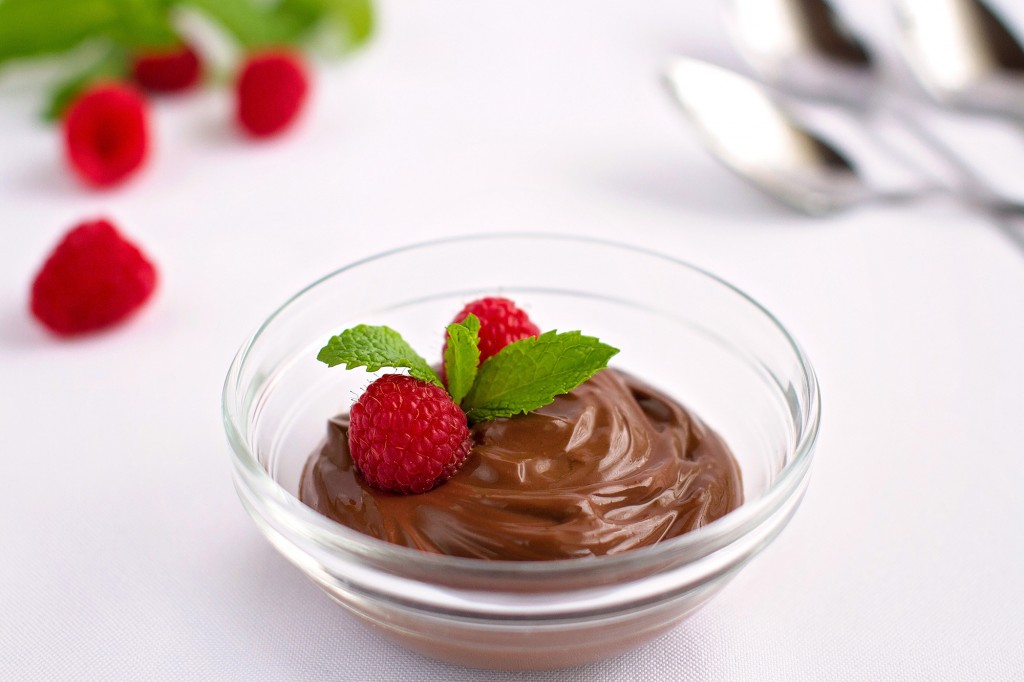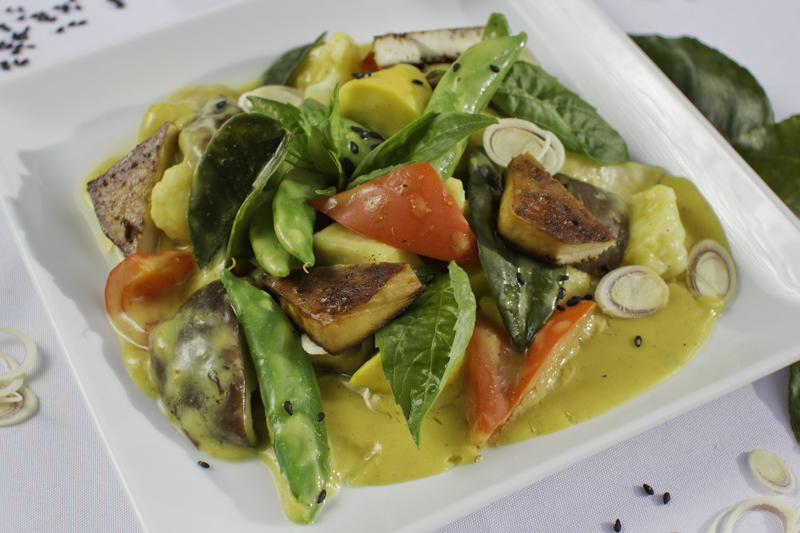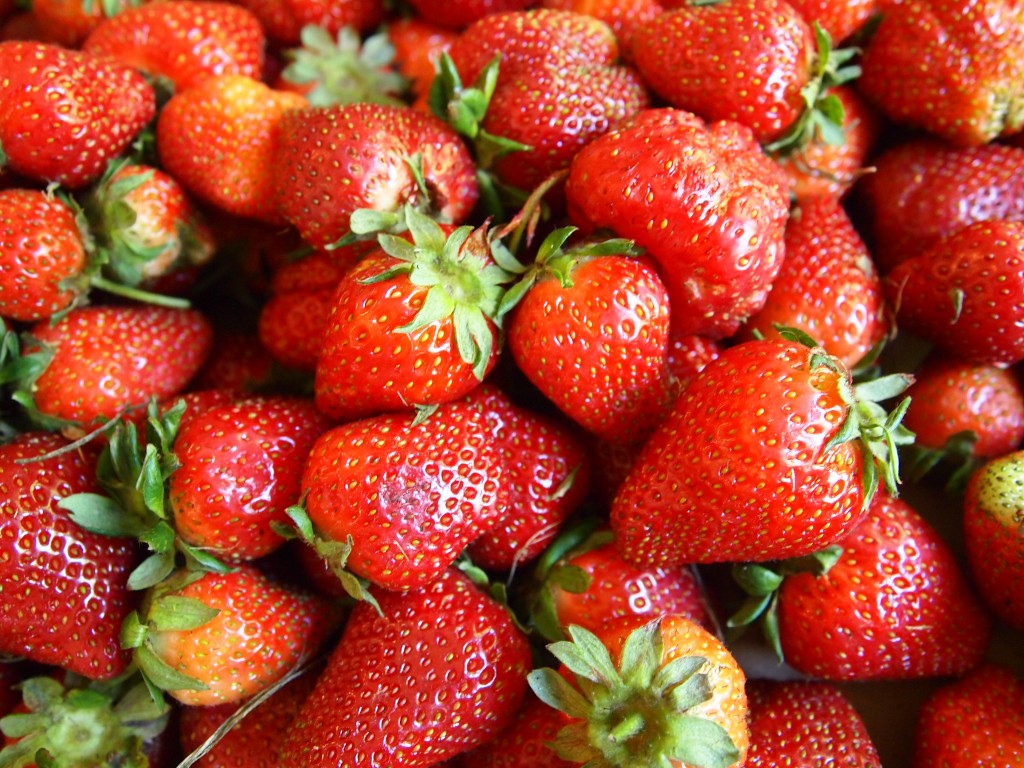
Flavorful Ways to Cook with Protein-Rich Soy
Soy is one of the most versatile foods with which to cook. Once you become familiar with the different cooking techniques, you’ll see how easy and delicious it can be. The Dr. Dean Ornish Program for Reversing Heart Disease recommends one soy food a day as a good source of nutrient-rich plant protein. This serving includes all 9 essential amino acids and naturally occurring omega 3s fatty acids, along with the heart-health benefits that come from phytochemicals such as isoflavones, phenolic acids and sapanonins. Soy also provides a very good source of fiber, vitamins, and minerals including folate, selenium, potassium and magnesium. (See this post for further information on the nutritional benefits of soy).
One of the reasons tofu is so diverse is that it has a neutral taste. The soft porous texture allows it to act like a sponge and absorb the flavor of a marinade or take on the taste of spices.
The variety of ways to enjoy soy are even more amazing than all the heart health benefits. These include dishes such as this Tofu Scramble or Chocolate Pudding from the Ornish Kitchen sample menu. Soy in the form of tofu makes a delicious, heart-healthy substitute for cheese, which provides an outstanding filling for Spinach and Mushroom Lasagna. Many grocery stores also sell already prepared tofu such as baked or grilled tofu that can be easily tossed in salad without having to cook it.
To start, it’s good to understand the basics of the different types of soy and the best way to prepare and enjoy them.
Edamame
This is the simplest and purest form of soy. Edamame are immature fresh green soybeans that grow in a pod. They are rich in fiber, including a good source of cholesterol-reducing soluble fiber. A half cup of shelled beans has 120 calories, 9 grams of fiber, 0.3 grams plant omega-3 fatty acids, and 11 grams of heart-healthy plant protein. This simple green bean has gained popularity over the years with its nutty fresh flavor and light crunchy texture, so it is easy, either in the pod or shelled, to find in most any grocery store, and in Target and Walmart in the frozen food section. In Japanese restaurants, Edamame is a common starter dish and may be a great place for you to start with your first bite of this mighty little bean. It can be enjoyed straight from the pod with a dash of salt or the shelled beans can be added to a salad or stir-fry for added protein. Edamame with its rich texture and emerald color makes a fantastic guacamole replacement that we call Edamole. It is a delicious low fat version that doesn’t sacrifice the flavor and creaminess of a traditional guacamole.
Types of Tofu
Tofu is made in a similar way to ricotta cheese, using a “milk” derived from ground soybeans. The ground soybeans are heated, then the milk is separated from the solids and mixed with a firming agent that curdles the milk. The curds form and the whey (liquid) is pressed out. The pressing action creates the tofu block from the bean curd. The texture of tofu varies depending on the coagulating agent and the water content. There are several types of tofu which vary in texture. Different recipes call for different textures. For example, soft and silky silken tofu is best used for creamy sauces to produce a smooth and velvety consistency. A firm or sprouted tofu is best for a stir-fry to provide a dense and meaty texture. One of the reasons tofu is so diverse is that it has a neutral taste. The soft porous texture allows it to act like a sponge and absorb the flavor of a marinade or take on the taste of spices.
Silken tofu is the velvety little the cubes of tofu mingling in your a cup of miso soup at a Japanese restaurant. It is made like yogurt and has a custard-like texture. A higher water content gives it a silky and smooth consistency. Most often, it is packaged in an aseptic 10 ounce box that doesn’t need refrigeration. It can be found in the Asian food isle of a grocery story, or in a section with other tofu products. There are several different options that include soft, firm and extra-firm, but even the extra firm is soft and light. Silken makes a fabulous creamy base for sauces, dips, dressings, soups, smoothies and desserts. It is an excellent way to eliminate the high fat cream without sacrificing rich velvety texture. It’s also ideal for pureeing, blending and processing with other ingredients to create a creamy texture.
Silken is also a great substitute for eggs, cream or as a non-dairy swap for yogurt. Typically, ¼ cup silken tofu is equivalent to 1 egg in a recipe. Blend the silken tofu until it is a very smooth consistency, making sure that all the chunks of tofu are evenly whipped together. It can then be mixed with any other wet ingredients in a recipe for proper blending. The extra firm type that comes in the vacuum packed box such as Mori-nu works the best when replacing an egg.
Soft: Soft tofu has a light custard texture, yet it is firmer than silken. It is also great to use for sauces, dips and smoothies to produce just a slightly thicker consistency. It can also be used in baking. Firm has less water content. Depending on the degree of firmness and how it is packaged, however, it may still need pressing to eliminate some of the extra fluid. This type of tofu can be used in the most diverse ways. It provides a good firm texture for baking, grilling, or sautéing.
Extra Firm: This tofu has been pre-pressed longer than soft or firm tofu, leaving a texture that is great for marinating or grilling. The extra firm texture gives enough firmness for this recipe to hold together well. The extra firm tofu is an excellent choice for the Tofu Teriyaki since it provides a firm and meaty texture while soaking in the flavors of the delicious teriyaki sauce.
Sprouted tofu is the newest on the market with many great attributes. It’s made from sprouted soybeans, which are easier to digest and even more nutrient dense with added calcium, iron, and twice as much protein than regular tofu. Another fabulous feature is that is the firm texture which requires little to no pressing. It’s great to use for grilling, stir-fries, salads, sandwiches and more.
Tempeh
Tempeh is another fantastic soy food that can be easily included in a plant-based lifestyle. It is very versatile and easy to use with a satisfying firm meat-like texture. Tempeh provides an excellent source of nutrient-rich, plant protein with over 15 grams of protein per half cup with 3 ½ grams of fiber along with all the heart-healthy nutrition of soy foods such as beneficial isoflavones.
Tempeh is made from fermented cooked soybeans which are formed into a patty. Whole grains such as brown rice or barley and other ingredients such flax or spices can be added during this fermentation process which offers a variety of flavors and different textures. Unlike tofu, tempeh needs to be cooked. It can be baked, grilled or sautéed and used as a plant protein in many different culturally- inspired dishes.
How to Prepare Tofu
Most varieties of tofu, other than silken, come packaged in a block immersed in water to prevent it from drying out. The first step after opening the package is to drain the excess water off and then press the excess water out of the tofu block for your desired consistency. Here are a couple of ways to remove the water.
Weighted pressing: This is a simple technique that allows you to prepare the other ingredients of a recipe while the water is passively pressed from the tofu. You can also put it in the refrigerator overnight to remove the most amount of water, so you will have a firmer tofu to use the next day.
Step 1: Place tofu block on a plate with a lip (edges that flare up to hold the excess water that seeps out of the tofu onto the plate).
Step 2: Place another plate or flat surface such as a small cutting board on top of the tofu to make a “tofu sandwich.” Place a heavy object such as a large can of tomatoes or bag of beans on top, heavy enough to provide light pressure, but not so heavy to crush the tofu block.
Step 3: Leave for any time from 20-30 minutes to overnight to allow for maximum water to seep out. Drain excess water into the sink. The tofu will now have a firmer consistency.
Towel pressing: this technique works best if you first slice the tofu length-wise into ½ slices, but it is not required.
Step 1: Use a clean dish towel or several thick paper towels and lay the sliced tofu on the towel.
Step 2: Cover it with a second layer of paper towel and press firmly to soak up the excess moisture from the tofu.
Quick Press: This is a quick and easy method with just one step. With a clean towel simply squeeze out the excess liquid without crumbling the tofu block, unless you are using tofu crumbles in your recipe.
Oven Drying:
Step 1: Preheat oven to 375 degrees F.
Step 2: Line a rimmed baking sheet with parchment paper.
Step 4: Slice tofu to ¼ inch thin slices.
Step 5: Place sliced tofu on lined baking sheet. After 10-15 minutes, check and drain excess liquid off of the baking sheet and return to oven to bake for another 10-15 minutes until excess liquid has evaporated.
What is your favorite way to prepare soy?







